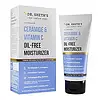What's inside
What's inside
 Key Ingredients
Key Ingredients

 Benefits
Benefits

 Concerns
Concerns

No concerns
 Ingredients Side-by-side
Ingredients Side-by-side

Water
Skin ConditioningCaprylic/Capric Triglyceride
MaskingGlycerin
HumectantSodium Acrylates Copolymer
Coconut Alkanes
EmollientDimethicone
EmollientAmber Extract
Skin ConditioningTocopheryl Acetate
AntioxidantTerminalia Ferdinandiana Fruit Extract
AntioxidantLaminaria Digitata Extract
Skin Protecting3-O-Ethyl Ascorbic Acid
Skin ConditioningPhenoxyethanol
PreservativeLecithin
EmollientCetyl-Pg Hydroxyethyl Palmitamide
Skin ConditioningCeramide 1
Skin ConditioningCeramide 2
Skin ConditioningCeramide 3
Skin ConditioningCeramide 4
Skin ConditioningCeramide 6 Ii
Skin ConditioningWithania Somnifera Root Extract
Skin ConditioningDisodium EDTA
Ethylhexylglycerin
Skin ConditioningWater, Caprylic/Capric Triglyceride, Glycerin, Sodium Acrylates Copolymer, Coconut Alkanes, Dimethicone, Amber Extract, Tocopheryl Acetate, Terminalia Ferdinandiana Fruit Extract, Laminaria Digitata Extract, 3-O-Ethyl Ascorbic Acid, Phenoxyethanol, Lecithin, Cetyl-Pg Hydroxyethyl Palmitamide, Ceramide 1, Ceramide 2, Ceramide 3, Ceramide 4, Ceramide 6 Ii, Withania Somnifera Root Extract, Disodium EDTA, Ethylhexylglycerin
Water
Skin ConditioningNiacinamide
SmoothingPropanediol
SolventCentella Asiatica Extract
CleansingCaprylic/Capric Triglyceride
MaskingGlycerin
HumectantXylitol
HumectantGlucose
HumectantAnhydroxylitol
HumectantPhoenix Dactylifera Seed Extract
MoisturisingAdenosine Phosphate
Skin ConditioningC13-15 Alkane
SolventCoco-Glucoside
CleansingButyrospermum Parkii Butter
Skin ConditioningStearic Acid
CleansingHydrogenated Ethylhexyl Olivate
EmollientHydrogenated Olive Oil Unsaponifiables
EmollientHyaluronic Acid
HumectantPhenoxyethanol
PreservativeEthylhexylglycerin
Skin ConditioningPentylene Glycol
Skin ConditioningFructose
HumectantUrea
BufferingCitric Acid
BufferingMaltose
MaskingSodium PCA
HumectantSodium Chloride
MaskingSodium Lactate
BufferingTrehalose
HumectantAllantoin
Skin ConditioningCetyl Alcohol
EmollientAcrylates/C10-30 Alkyl Acrylate Crosspolymer
Emulsion StabilisingPanthenol
Skin ConditioningEthoxydiglycol
HumectantTocopherol
AntioxidantZinc PCA
HumectantCapryloyl Glycine
CleansingSarcosine
Skin ConditioningCinnamomum Zeylanicum Bark Extract
AntimicrobialSodium Hydroxide
BufferingSodium Gluconate
Skin ConditioningWater, Niacinamide, Propanediol, Centella Asiatica Extract, Caprylic/Capric Triglyceride, Glycerin, Xylitol, Glucose, Anhydroxylitol, Phoenix Dactylifera Seed Extract, Adenosine Phosphate, C13-15 Alkane, Coco-Glucoside, Butyrospermum Parkii Butter, Stearic Acid, Hydrogenated Ethylhexyl Olivate, Hydrogenated Olive Oil Unsaponifiables, Hyaluronic Acid, Phenoxyethanol, Ethylhexylglycerin, Pentylene Glycol, Fructose, Urea, Citric Acid, Maltose, Sodium PCA, Sodium Chloride, Sodium Lactate, Trehalose, Allantoin, Cetyl Alcohol, Acrylates/C10-30 Alkyl Acrylate Crosspolymer, Panthenol, Ethoxydiglycol, Tocopherol, Zinc PCA, Capryloyl Glycine, Sarcosine, Cinnamomum Zeylanicum Bark Extract, Sodium Hydroxide, Sodium Gluconate
 Reviews
Reviews

Ingredients Explained
These ingredients are found in both products.
Ingredients higher up in an ingredient list are typically present in a larger amount.
This ingredient is an emollient, solvent, and texture enhancer. It is considered a skin-softener by helping the skin prevent moisture loss.
It helps thicken a product's formula and makes it easier to spread by dissolving clumping compounds.
Caprylic Triglyceride is made by combining glycerin with coconut oil, forming a clear liquid.
While there is an assumption Caprylic Triglyceride can clog pores due to it being derived from coconut oil, there is no research supporting this.
Learn more about Caprylic/Capric TriglycerideEthylhexylglycerin (we can't pronounce this either) is commonly used as a preservative and skin softener. It is derived from glyceryl.
You might see Ethylhexylglycerin often paired with other preservatives such as phenoxyethanol. Ethylhexylglycerin has been found to increase the effectiveness of these other preservatives.
Glycerin is already naturally found in your skin. It helps moisturize and protect your skin.
A study from 2016 found glycerin to be more effective as a humectant than AHAs and hyaluronic acid.
As a humectant, it helps the skin stay hydrated by pulling moisture to your skin. The low molecular weight of glycerin allows it to pull moisture into the deeper layers of your skin.
Hydrated skin improves your skin barrier; Your skin barrier helps protect against irritants and bacteria.
Glycerin has also been found to have antimicrobial and antiviral properties. Due to these properties, glycerin is often used in wound and burn treatments.
In cosmetics, glycerin is usually derived from plants such as soybean or palm. However, it can also be sourced from animals, such as tallow or animal fat.
This ingredient is organic, colorless, odorless, and non-toxic.
Glycerin is the name for this ingredient in American English. British English uses Glycerol/Glycerine.
Learn more about GlycerinPhenoxyethanol is a preservative that has germicide, antimicrobial, and aromatic properties. Studies show that phenoxyethanol can prevent microbial growth. By itself, it has a scent that is similar to that of a rose.
It's often used in formulations along with Caprylyl Glycol to preserve the shelf life of products.
Water. It's the most common cosmetic ingredient of all. You'll usually see it at the top of ingredient lists, meaning that it makes up the largest part of the product.
So why is it so popular? Water most often acts as a solvent - this means that it helps dissolve other ingredients into the formulation.
You'll also recognize water as that liquid we all need to stay alive. If you see this, drink a glass of water. Stay hydrated!
Learn more about Water